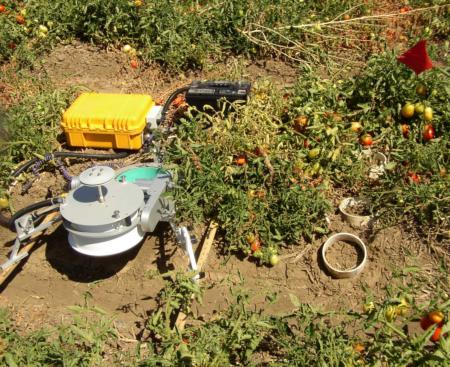Nitrogen and Carbon Cycling in Organic Vegetable Production

Soil biology and ecology under organic production is a subject of fundamental and practical interest. Examples of past work by our lab group include rates of nitrogen transformations, soil microbial communities, and field-level changes in nitrogen dynamics in relation to management factors:
- Nitrogen processes in organic and conventional soils: Microbial and plant nitrogen transformations, and soil microbial community composition have been compared between the organic and conventionally managed soils at the Long Term Research in Agricultural Systems (LTRAS) project at University of California at Davis
- Transition to organic production: Changes in nitrogen pools and microbial activity are being monitored during the transition to organic production by large-scale conventional growers in the Salinas Valley, California, along with changes in other ecological factors
- Biodiversity and ecosystem functions across multiple habitats at an organic farm in the Sacramento Valley
A more recent project, "Researcher and Farmer Innovation to Increase Nutrient Cycling on Organic Farms", was funded by the USDA Organic Research and Education Initiative. This project seeks to identify innovative ways to measure and to increase nutrient cycling on organic farms using input from researchers and farmers
Organically-farmed crops are susceptible to nitrogen (N) limitations, which reduce yields, and to environmentally detrimental pulses of N loss. Testing for N availability could reduce losses and improve productivity, but current soil N testing approaches were developed for conventional agriculture, which relies mainly on inorganic N inputs. Since organic farming relies on microbial transformations to liberate N from organic inputs, more sophisticated tools are needed to indicate N availability in this dynamic system. We are testing the potential for using root gene expression as an indicator of the status of plant nitrogen uptake, along with measures of soil microbial nitrogen transformations, to determine if plant N demand is being met while minimizing the risk of nitrogen loss to the environment. For more details on this project, see Nutrient Cycling on Organic Farms across a California Landscape, FTIR indicators of soil organic matter quality across a landscape of organic management, and Gene Expression in Tomato Roots.